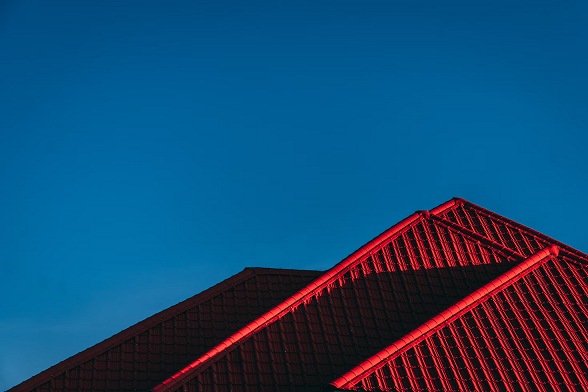When it comes to designing a home, every aspect plays a crucial role in creating a space that is both functional and aesthetically pleasing. One aspect that often goes overlooked, but holds immense significance, is the design of the roof. The roof is not just a mere cover for the house; it is an integral part of the overall architectural composition. In this blog, we will explore why roof design is so important and how it influences the look, functionality, and sustainability of a home.
The Aesthetic Importance of Roof Design
One cannot deny the impact that roof design has on the overall visual appeal of a home. Different roof styles can completely transform the look and feel of a house. From the classic gable roof to the sleek and modern flat roof, each style brings its own charm and character. The choice of roof design should be in harmony with the architectural style of the house, whether it’s a traditional farmhouse, a contemporary masterpiece, or a charming cottage. A well-designed roof can enhance the curb appeal of a home and create a lasting impression on visitors.
The Functional Significance of Roof Design
While aesthetics are important, the function of a roof should never be overlooked. A roof’s primary purpose is to protect against natural elements such as rain, snow, and sunlight. Experienced contractors at masterroofcontracting.com advise that a well-designed roof is vital to ensuring the durability and functionality of a home. It ensures that the interior of the house remains dry and comfortable, regardless of the weather conditions outside. Additionally, the slope and shape of the roof play a crucial role in preventing water accumulation and directing it away from the house. This helps maintain the structural integrity of the building and prevents damage caused by leaks and moisture.
The climate and environment in which a house is located also influence the choice of roof design. For instance, areas with heavy snowfall may require a steeper roof pitch to prevent snow buildup and potential collapse. On the other hand, regions with hot climates might benefit from roof designs that provide proper ventilation and insulation to keep the interior cool. Considering these factors ensures that the roof design is aesthetically pleasing, functional, and suitable for the specific location.

Energy Efficiency and Sustainability
In recent years, there has been a growing focus on sustainable architecture and energy-efficient homes. The roof plays a significant role in optimizing energy consumption within a house. By incorporating green roof technologies, such as solar panels or vegetative roofing systems, homeowners can harness renewable energy and reduce their dependence on traditional power sources. These eco-friendly roof designs not only help lower energy bills but also contribute to a greener and more sustainable future.
Furthermore, selecting the right roofing materials can significantly impact a home’s energy efficiency. Materials with high thermal resistance, such as metal or cool roofs, can effectively reflect sunlight and reduce heat absorption, resulting in reduced cooling costs during the hot summer months. Proper insulation in the roof design also helps maintain a comfortable indoor temperature throughout the year, reducing the reliance on heating or cooling systems.
Safety and Durability
Beyond aesthetics and energy efficiency, a well-designed roof ensures the safety and durability of a home. The roof structure should be engineered to withstand various weather conditions, including strong winds, heavy rain, and even potential seismic activity in some regions. A structurally sound roof not only protects the inhabitants but also promotes the longevity of the entire building.
To ensure durability, factors such as the quality of roofing materials, proper installation techniques, and regular maintenance should be considered. Investing in high-quality materials and hiring experienced professionals for installation can prevent common roofing issues such as leaks, sagging, or premature deterioration. Regular inspections and maintenance, including cleaning gutters and removing debris, help identify and address any potential problems before they escalate.
Innovation and Technology in Roof Design
With advancements in technology, roof design has seen remarkable innovation in recent years. From lightweight and sustainable materials to cutting-edge construction methods, the possibilities for designing functional and visually stunning roofs are expanding rapidly. For example, solar roofing systems have become more accessible, allowing homeowners to generate their own clean energy while maintaining the aesthetic appeal of the roof.
In addition to renewable energy solutions, smart roof systems are gaining popularity. These systems integrate technology, such as sensors and automation, to monitor and control various aspects of the roof, including ventilation, insulation, and even rainwater harvesting. As we move forward, we can expect further advancements in roof design that prioritize sustainability, efficiency, and convenience.
Conclusion
A well-designed roof is an essential aspect of home architecture that should not be overlooked. It brings together aesthetics, functionality, energy efficiency, and sustainability, contributing to the overall beauty, comfort, and longevity of your home. So, when designing or renovating your home, make sure to prioritize the design of your roof for a truly remarkable and functional living space.

